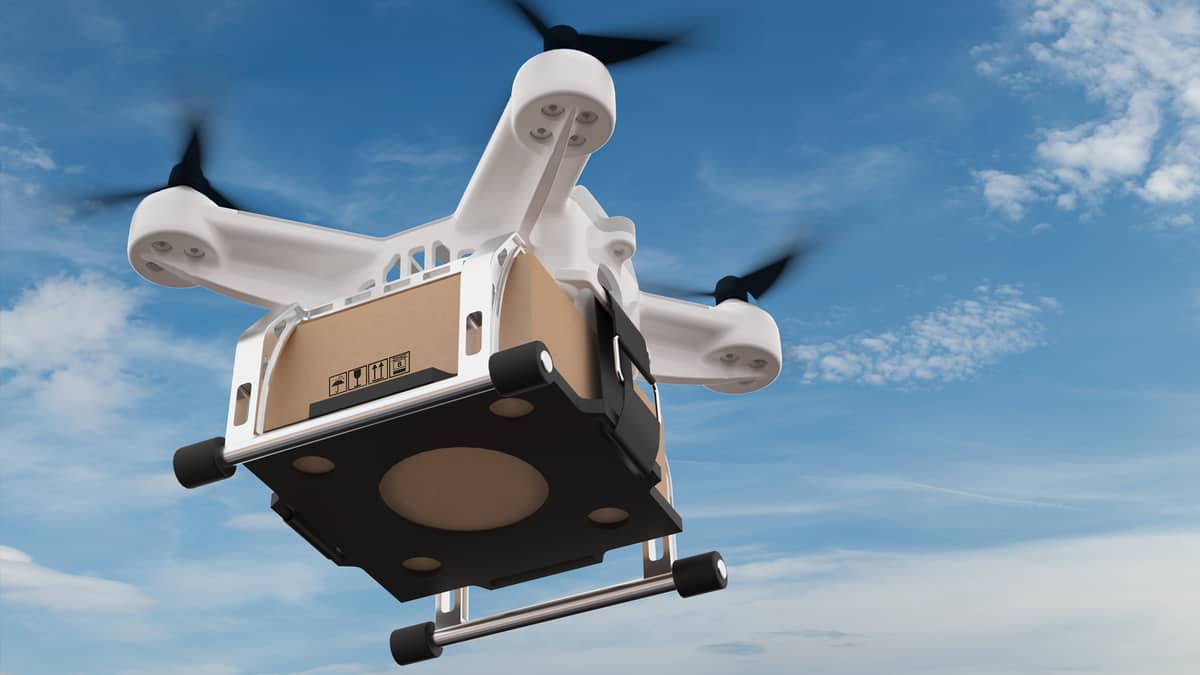Expedited delivery has been the primary focal point of last-mile delivery networks of late, as ecommerce businesses rush to make ‘lightning-fast delivery promises’ one of their prime differentiators from rival brands. The pressure to deliver quickly has led businesses to move their warehouses much closer to their customer base. As most of the ecommerce patronage comes from urban regions, companies are forced to scramble for precious real estate to house their inventories.
Apart from physically moving warehouses closer to consumers to cut delivery times, companies also look at novel last-mile delivery methods, of which the drone segment – albeit nascent – is considered a game-changer. Ecommerce giants like Amazon and Alibaba have been particularly fond of drones, with both the companies testing their own line of drones across the U.S. and China, respectively.
FreightWaves spoke with Lucas Le Bell, the CEO of CerbAir, a Paris-based counter-drone surveillance solutions scaleup, to understand the impact commercial drones can have on the logistics industry and beyond.
Le Bell initiated the discussion by saying that although drones can be commercialized for last-mile deliveries, the technology would not be feasible everywhere. “Having swarms of drones fly on top of people in a city will be a nightmare from both an operational and regulatory perspective,” he said.
The technology needed to commercialize delivery drones is already available in the market, said Le Bell. Drone delivery commercialization is more of a regulatory issue than a technological problem, and rightly so, as governmental authorities will need to take a balanced stand that ultimately assures the safety of people.
“The regulatory body wants to make sure the users have envisioned all the bad things that could happen. Officials are enticing companies to develop fail-safe procedures – technical add-ons – that ensure drones can’t be jammed or can’t be brought down from the sky suddenly,” said Le Bell.
Companies are thinking up all the potential scenarios where drone deployment could go wrong and are preparing counter-measures for the same. Le Bell pointed at this to be the reason for the extended delays in deploying drones over the last-mile. “Technologically speaking, drones are doable today. But regulatory authorities need to heed public opinions and also be sure drones are safe overall,” said Le Bell.
Drone deliveries will be far more feasible delivering parcels to poorly connected villages or towns in emerging economies of Africa or Asia, rather than delivering packages weaving through New York City’s skyscrapers.
CerbAir’s mission is to make drones safe for everyone, and to reduce drone-based malicious attacks as much as possible. Le Bell explained that the scaleup is pushing drone manufacturers to add an electromagnetic signature to every drone they produce.
With a unique signature, drones can be identified and traced back to their pilots – unlike the current situation, where it is hard to determine who piloted a drone. This gives bad actors a feeling of impunity, which in turn increases the likelihood of criminal activities being carried out using drones.
“This means that people would be more responsible for their acts with drones. The unintentional drone accidents will decrease dramatically,” said Le Bell. “Having this electromagnetic signature on drones will also help with the emergence of unmanned traffic management (UTM).”
UTM will help create and standardize a system of air corridors for drones, like the existing ones for commercial airline traffic. “These air corridors will be at lower altitudes, through which drones can fly. And we should be able to monitor the traffic across these corridors and ensure safety. Such air corridors can also address unconventional threats due to drones,” Le Bell said.
The future of drone traffic, Le Bell contended, would revolve around air controllers monitoring the sky, focused on ensuring drones move between predestined locations and not waver from their paths. “At CerbAir, we do that. We look to master the radio frequency spectrum, master drone communication, and with that, we know how to intercept and take them down when the need arises,” he said.











